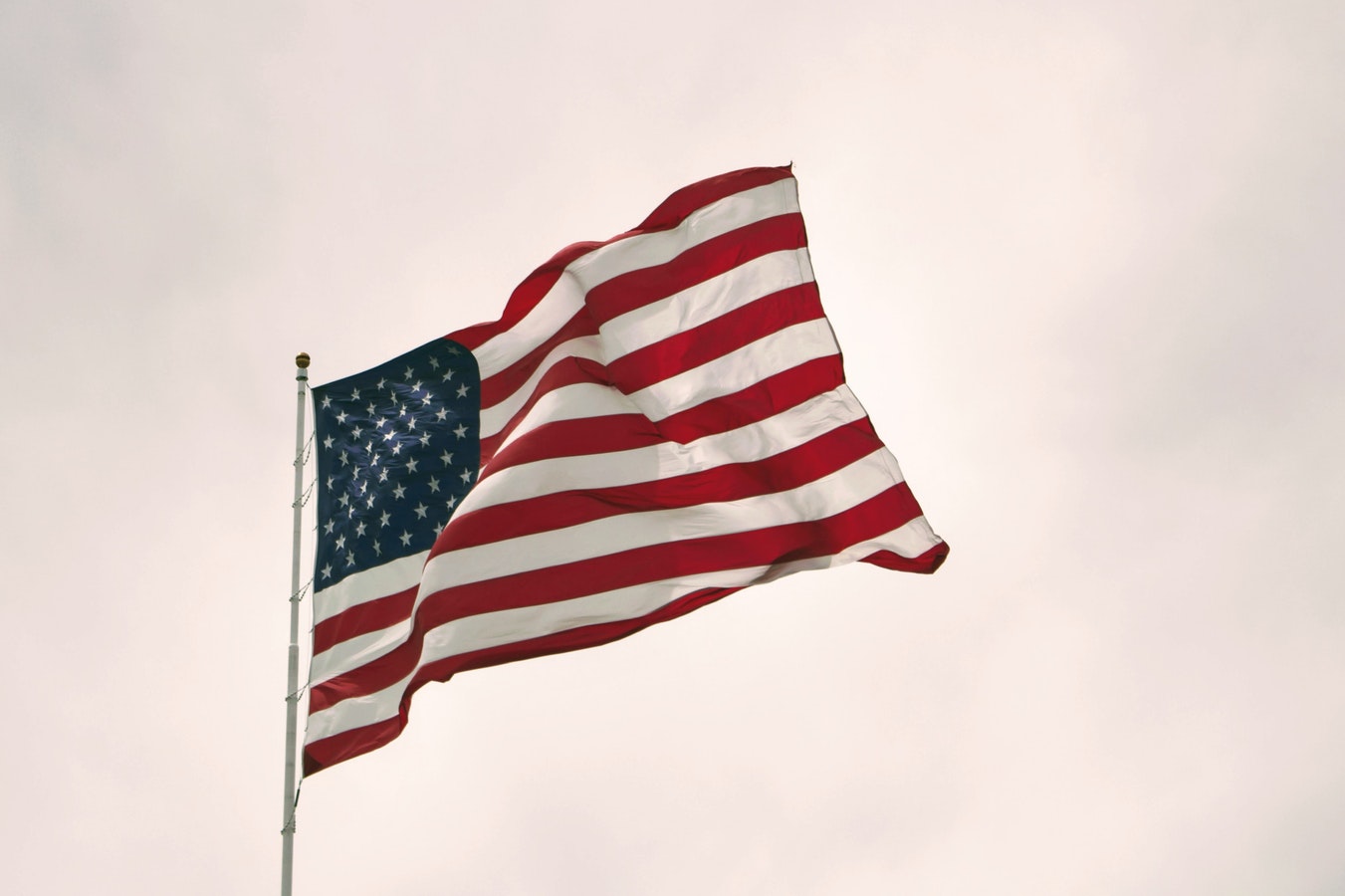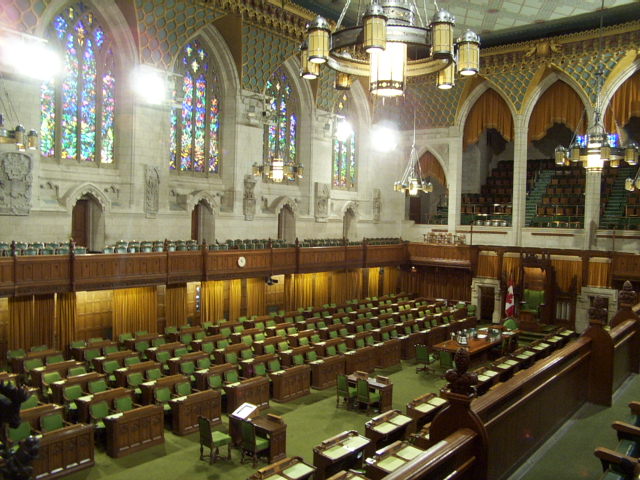Canada Increases Immigration Rate to 1% of Its Population
Immigration Minister Confirms Our Rates are 2.6 Times That of the US
By 2021, Canada will have raised its immigration intake to 350,000 people. This increase is 40,000 more than what’s to be expected for this year and makes up for 1% of the country’s population.
This figure is comparable to the 0.3 percent immigration rate of the United States in 2017.
The strategy behind this increase is to fill large gaps in our labour market. A large portion – 72 percent – of these newcomers are arriving through economic programs specifically designed to strengthen our labour force with skilled foreign workers.
Across the country, there are significant shortages on skilled workers in the labour market in areas that either don’t have enough eligible candidates or are vastly populated by senior citizens.
On Board
The federal government’s own economic advisory council and many other economic groups and immigration advocates across the country see the value in taking on more immigrants and have called for the increase year after year.
"In certain regions the hunger for workers is huge. This plan is making us very competitive in the global market. It enables us to continue to be competitive, it enables us to continue to present Canada as a welcoming country and to position us to continue to be (a leader) in skills attraction." says Immigration Minister, Ahmed Hussen.
Prime Minister Justin Trudeau’s Liberal government has approved a funding increase to accommodate the 2021 target. They’ve granted at 30 percent increase in the budget for settlement services.
An increase in funding has also been allocated to aid approximately 1,000 women and girl refugees in vulnerable situations to Canada over the next two years.
However, according to Hussen, in order to truly meet the country’s dramatic immigration increase plan over the next three years, another funding increase is required.
Preparation, Determination, and Gradualism
An increase of this proportion needs to be meticulously organized and executed. The Liberal government is taking the necessary measures to ensure these newcomers are accepted into the system carefully and that they have the access they need to settlement services.
"You need to be able to house them, you need to be able to settle them, you need to be able to provide integration services," he said.
He also expressed the importance of gradually increasing the immigration rate so the system can still process applications diligently and securely. Furthermore, gradualism is necessary for communities as they absorb immigrants as well as for local immigration partnerships to accommodate newcomers with services.
Using AI to Augment Immigration Systems
There Is a Clear Need for Scrutiny and Oversight with AI in Immigration Programs
The increasing popularity and use of artificial intelligence (AI) and machine learning to augment decision-making processes has significant implications for human rights. Nowhere is this more evident than in Canada’s immigration and refugee system, with numerous researchers, advocates, and law professionals raising concerns over the potential for serious breaches in human rights and procedural fairness.
This past September, human rights and refugee lawyer Petra Molnar co-authored a report titled “Bots at the Gate” on Canada’s use of these tools, which dates back to 2014.
Read the full report here: Bots at The Gate: A Human Rights Analysis of Automated Decision-Making in Canada’s Immigration and Refugee System
While there’s no doubt that the volume of applications to Canada’s system places a significant demand on decision-makers, using AI tools presents numerous concerns.
Immigration and refugee decisions involve the exercise of discretion and administrative law clearly requires that such discretion is exercised independently and fairly. Moreover, the decision-making process by administrative decision-makers involves complex analysis, careful consideration of all evidence presented and a reasonable chain of reasoning. This is a role that, of course, requires intelligence and capacity of a human being and cannot be substituted by AI.
The potential for serious harm to individuals in situations that require the utmost human discretion should place these tools under serious scrutiny with serious oversight.
The Risks of Automating Human Nuance
At its core, automated decision-making attempts to replicate human analysis of data, generally with an algorithm or AI. An algorithm is a set of instructions designed to organize and process a set of data to produce the desired outcome, while AI is a machine process that mimics human cognitive function, such as problem-solving, learning, or making a decision based on available data.
By defining these systems, the risk is immediately apparent: how can they account for human nuance and discretion? How can an algorithm sort data aid in compassionate or humanitarian application processing? This poses serious ethical concerns, not least of all due to the potential for bias and prejudice influencing algorithmic processes.
Clear Need for Scrutiny, But No Obvious Solutions
As big an issue as it is, the use of AI in immigration systems has no immediate or clear solution. It’s likely that the federal government will continue to explore, fund, and develop AI solutions, especially as the number of refugee claims reaches new heights. Domestic and legal obligations and promises show that immigration is not likely to stop any time soon, nor is it likely to slow down.
What’s more, Canada’s backlogged immigration and refugee systems are one of the chief reasons why AI systems hold appeal. They automate time-consuming, costly tasks, helping human staff sort through the backlog at a faster rate than before.
But at the same time, while greater scrutiny and transparency is needed for these systems and processes, some opacity must be maintained. Fully transparent source code, something Molnar and her co-authors recommend, opens the door for exploitation of immigration systems. Another recommendation Molnar makes could present a viable alternative: an independent oversight committee or regulatory body.
This is a new ground of debate for Canada’s immigration and refugee system. Due to the impacts these decisions have on the lives of applicants, though, it’s imperative that Canada does its due diligence well before relying on AI in its administrative decision-making.
Canada Deems US Safe for Asylum Seekers
Despite US Government Attitude, Country Still Safe for Asylum Seekers—But Room For Improvement In International Agreements
According to documents obtained by The Canadian Press through access-to-information laws, the Canadian government conducted a review of its Safe Third Country Agreement with the United States following changes in US immigration policy.
Between January and March of 2017, Canada conducted an extensive review of this policy, but in-depth analyses remain redacted in the released documents. Nonetheless, these documents went on to state that the US “continues to meet the requirements for designation as a safe third country.”
However, this review also noted that the agreement is “antiquated” and needs updating to “ensure there continues to be orderly migration within the North American perimeter.”
The Safe Third Country Agreement
The Safe Third Country Agreement has raised contentious issues amongst immigration lawyers and advocates in Canada for quite some time following Prime Minister Justin Trudeau’s public statements that Canada welcomes “those fleeing persecution, terror and war.” Under the Safe Third Country Agreement (STCA), asylum seekers entering Canada through official ports of entry along the United States-Canada border would be turned away.
As a result, asylum seekers looking to flee the United States following President Donald Trump’s crackdown on immigration turned to unofficial and irregular border crossings. This allows them to circumvent the STCA, which states that asylum seekers must make a refugee claim in the first safe country they arrive in.
Review Findings
Recently, the Canadian government has come under fire for not suspending the STCA. Criticism from both groups for and against an open policy for refugees and immigration is frequently seen in the news.
Despite heavy criticism for the US government’s approach to immigrants and refugees, particularly its treatment of families with the highly controversial and contemptible practice of separating parents from children, Canada’s review of the STCA has found the United States to be a safe country for asylum seekers. However, this is surprising and does not reflect the real fear and insecurity that individuals fleeing the United States to Canada feel.
Canada has deemed the US is safe due to its meeting three basic requirements: compliance with the United Nations convention against torture, compliance with the United Nations convention on refugees, and a good human rights record.
Still, the documents obtained by The Canadian Press also included internal emails between immigration officials that show concerns about the STCA as well as public perceptions about irregular border crossings. It’s clear that these departments are closely monitoring the situation, but the specific mentions that staff find the STCA to be outdated raises further questions about why it remains. Canada’s approach to the STCA appears to be at a crossroads, and it’s never been more apparent that change is required to ensure the safety of all those fleeing persecution and seeking protection in Canada.
Federal Government Sets New Immigration Intake Levels
350,000 Immigrants A Year by 2021, But There’s Still Room For More
On October 31, 2018 the federal government announced that Canada would welcome 350,000 immigrants by 2021, an increase of 40,000 from 2018’s target of 310,000. That target will rise in the coming years and will include all classes of new arrivals.
By and large, these immigrants will help with skills shortages and labour market gaps throughout Canada. According to Immigration Minister Ahmed Hussen, this sort of economic immigration is necessary, especially in those parts of the country with aging populations and worker shortages.
“This plan is making us very competitive in the global market,” commented Hussen. “It enables us to continue to be competitive, it enables us to continue to present Canada as a welcoming country and to position us to be (a leader) in skills attraction.”
While the government cannot dictate where immigrants settle, there are positive signs that the benefits of economic immigration will spread beyond major urban centres.
Bringing Economic Immigration Across Canada
Though the Minister and his department did not confirm where the government hopes to settle these immigrants, the 2018 Annual Report to Parliament on Immigration showed that 39% of economic immigrants settled outside the major urban centres of Montreal, Toronto, and Vancouver.
Ontario, British Columbia, and Quebec remain the most popular destinations for economic immigrants, but 2017 was a significant departure from the usual trend. For example, twenty years prior, in 1997, 90% of economic immigrants settled in those three provinces. By comparison, that number has dropped to 66%, with the rest of the country accounting for the remaining 34%.
While major urban centres remain popular with immigrants, it’s important to note that natural-born Canadians are just as likely to migrate there as well. As such, smaller communities and other regions suffer as young workers move. Provincial Nominee Programs have helped encourage immigrants to settle in areas that are not as popular with natural-born Canadians. These programs, as well as other incentives, have helped encourage immigration to these parts of the country.
Plenty of Room in Canada, Advocates Argue
While this increase is significant and welcome for many advocates, many more believe that Canada can and should welcome more immigration.
In fact, the government’s own economic advisory council even suggested Canada could increase its immigration numbers gradually to a total of 450,000 by 2025. That suggestion, back in 2016 and again in 2017, has been ignored in favour of a more moderate approach. Given the recent settlement statistics, though, it seems like Canada could easily handle 450,000. Ryerson politics professor John Shields commented that the more moderate numbers announced by the federal government are a more politically expedient option.
“It needs to be acceptable in terms of the politics of it,” said Shields. “We know that immigration is a very sensitive topic.”
But it’s clear that economic immigration holds many potential benefits for Canadians. The 2018 Annual Report notes that nearly half of all immigrants between the ages of 25 and 64 hold a bachelor’s degree or higher. What’s more, immigrant children have a higher university completion rate than the children of two Canadian citizens by birth. Immigrants are highly active in Canadian society, with high volunteerism and participation in social organizations.
These people contribute heavily to Canada, supporting their community through many socioeconomic avenues. While 350,000 immigrants a year by 2021 might seem like “enough,” the fabric of Canadian society comprises all peoples from all walks of life. Back in 2016, in an address to Parliament, then-US President Barack Obama commented, “The world needs more Canada.” Why set limits on the number of people who want to be part of this country’s rich history and culture.
Immigration Lawyers Still Concerned Over Immigration and Refugee Board
House of Commons’ IRB Study Leaves Questions Unanswered for Law Professionals, Critics
Canada’s Immigration and Refugee Board was recently subject of a House of Commons study on the lack of an independent complaints process against board members.
Report 20: Responding to Public Complaints: A Review of the Appointment, Training and Complaint Processes of the Immigration and Refugee Board, was presented to the House of Commons Standing Committee on Citizenship and Immigration on September 17, 2018.
The lack of a complaint process around specific areas (credibility of LGBTQ refugee claimants and sensitivity to those who have experienced trauma as result of gender-based violence, torture, or due to being vulnerable persons) was given particular focus in this study.
This study also follows specific allegations of sexism and incompetence amongst IRB members and decision makers. Back in January 2018, NDP Immigration Critic Jenny Kwan called for a parliamentary study of the IRB’s process after several lawyers and claimants came forward with their allegations.
But now that the review and study have been completed, critics and lawyers alike are frustrated by the parliamentary committee’s apparent complacency.
Recommendations Do Not Go Far Enough
As reported by the Law Times, many refugee and immigration lawyers welcome the study and review, but feel it does not go far enough to address the concerns at issue.
“It appears that the committee thought that things are not so bad that they require any sort of extreme measure or overhaul,” commented Toronto-based lawyer Nastaran Roushan.
Back in early 2018, Roushan filed a complaint against IRB judge Natalka Cassano, alleging both incompetence and aggressive behaviour towards Roushan and a refugee claimant.
Roushan appeared before the parliamentary committee, and while she welcomed some of the committee’s eight recommendations, she feels there’s still ground to cover.
Those eight recommendations include:
- Maintaining the current Governor in Council appointment system, but with the inclusion of an evaluation of a candidate’s awareness and understanding of discriminatory conduct and the standards of behaviour to which IRB members are to be held;
- A more vigorous approach to the IRB’s ongoing training processes, with additional sensitivity training, trauma-informed investigation techniques, and credibility assessment; and
- The creation of an independent complaints process for all administrative tribunals, including the IRB.
Roushan and others believe that the lack of any sort of recommendation that IRB appointees have any sort of knowledge of refugee law is a glaring oversight.
“I don’t know of any job where someone would apply for a job and not have some requisite degree of knowledge and skill,” said Roushan.
Missed Opportunity
Other lawyers feel that the parliamentary report is a missed opportunity for IRB membership to include the skills and expertise of legal professionals with experience in refugee and immigration law.
“It is a missed opportunity to be able to staff up the board with people that are already very well equipped with an education and training in skills that are necessary for a board member,” said lawyer Barbara Jo Caruso.
Lawyer Chantal Desloges appeared before the committee and stressed that an IRB member’s behaviour and knowledge were critical for her clients.
“The stakes are really high for these people, so the quality of decision-making is really important,” said Desloges.
Mathieu Genest, a spokesperson for immigration minister Ahmed Hussen, said that Immigration, Refugees and Citizenship is carefully reviewing the report before providing an official response. Meanwhile, an IRB spokesperson said the Board is still reviewing the committee’s recommendations, offering no further comment.
The IRB is an important decision-making body responsible for accepting or rejecting refugee claimants. It is a sensitive position that requires the exercise of discretion, expertise in the subject matter, and well-articulated decisions. The Board’s decisions have a profound impact on the lives of the claimants and their families with life-or-death consequences.
Procedural fairness must govern all of the Board’s proceedings and all of those who appear before the Tribunal legitimately expect to be treated in a dignified and respectful manner with due regard to their culture and unique circumstances. Providing greater transparency in the complaints process is vital in reinforcing procedural fairness and improving the quality of decision-makers and hearings that take place before the Refugee Protection Division of the IRB.





